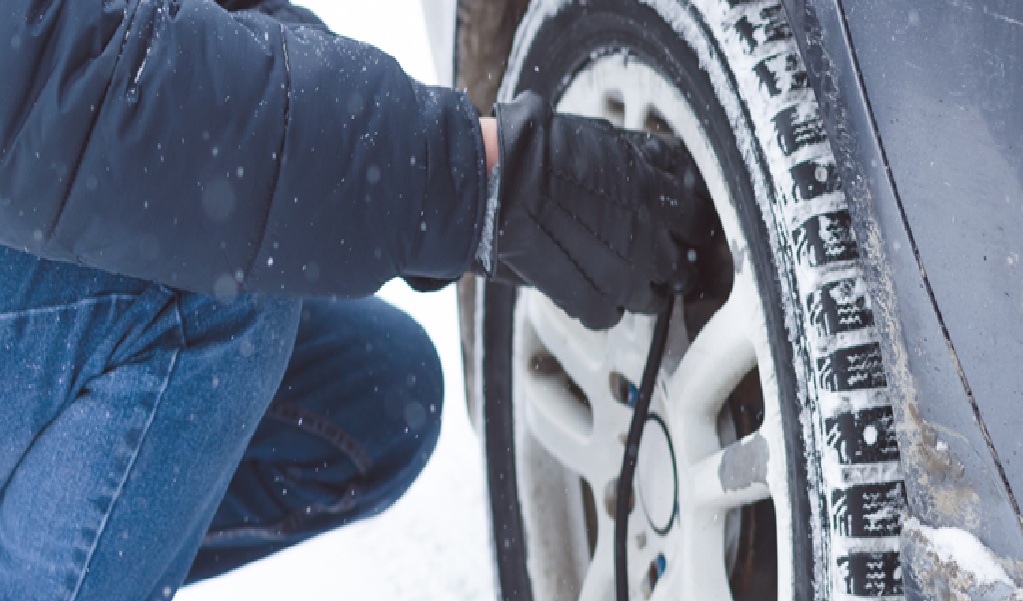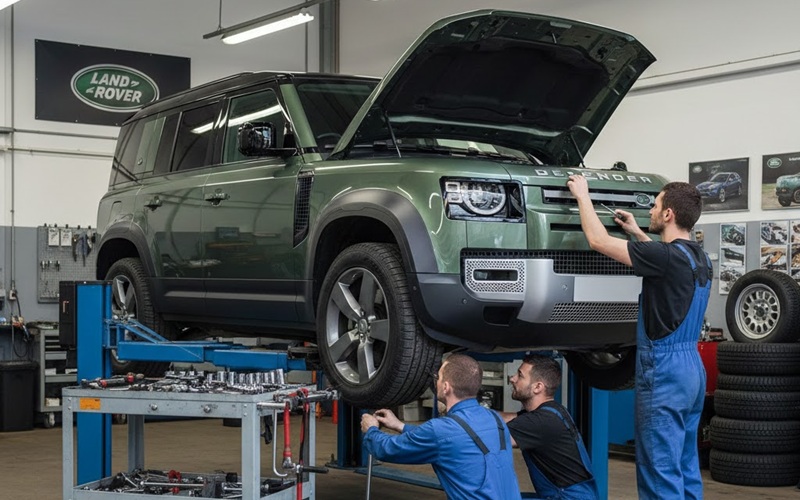As the temperature drops and winter sets in, many drivers face the challenge of maintaining optimal tire pressure in snowy and icy conditions. Proper tire inflation is crucial for safety, fuel efficiency, and tire longevity, especially during the harsh winter months. This guide will explore the intricacies of managing pressure in winter, focusing on snow and icy road conditions while using the metric system for measurements.

Tire Pressure Basics
The Impact of Temperature on Tire Pressure
Temperature plays a significant role in tire pressure fluctuations. As a general rule, pressure decreases by approximately 0.1 bar (10 kPa) for every 10°C drop in temperature. As winter approaches and temperatures plummet, your pressure is likely to decrease naturally.
Recommended Pressure for Winter Tires
Winter tires typically require slightly higher pressure than all-season options. You should maintain an air pressure of 0.2 bar (20 kPa) higher in winters tires compared to all seasons. This additional pressure helps compensate for the softer rubber compound used in winter tires, ensuring optimal performance in cold conditions.
Adjust Tire Pressure for Winter Driving
Finding the Right Pressure
To determine the correct pressure for your vehicle:
- Check the driver’s side door jamb
- Look for a sticker on the fuel cap
- Consult your vehicle’s manual
- Refer to the vehicle manufacturer’s guidelines
The Myth of Lowering Tire Pressure for Snow
Contrary to popular belief, lowering air pressure does not generally improve traction in snow. While this technique may be effective for off-road driving in sand or mud, it does not translate well to winter road conditions. You want your tires to dig into the snow to reach the road surface beneath, which provides better traction.
Air Pressure for Different Winter Conditions
Fresh Snow and Ice
For driving on fresh snow and ice, maintaining the manufacturer’s recommended pressure or slightly increasing it is advisable, as this helps the tread pattern effectively channel snow and slush away from the contact patch, thereby improving grip and handling.
Packed Snow and Icy Roads
On packed snow and consistently icy roads, a slight increase in pressure can be beneficial, especially for newer winter tires. This extra pressure helps in removing water and slush from the central contact zone, enhancing grip.
Worn Winter Tires
If your winter tires have a tread depth of 4 mm or less, consider reducing the pressure slightly. This enlarges the contact area, potentially improving traction in snow. However, be cautious not to under-inflate, as this can lead to other safety issues.
Monitor and Maintain Tire Pressure in Winter
Frequency of Checks
Experts recommend checking pressure at least every two weeks, and at a minimum, once a month. Tires typically lose about 0.069 bar (6.9 kPa) each month, even when the vehicle isn’t used frequently.
Key Times for Pressure Monitoring
Be especially vigilant about checking pressure:
- Before and after long journeys
- During sudden weather changes (e.g., cold snaps or unexpected warm spells)
- After replacing tires
- When driving with heavy loads
Tools for Checking Pressure
Manual Gauges
- Analog Gauges: Traditional and reliable, though they may have minor accuracy variances.
- Digital Gauges: Modern, convenient, and feature a digital readout. They run on batteries and are generally very accurate.
- Bar Gauges: Cost-effective and simple, though less durable than other types.
Automated Systems
Many modern vehicles have Tire Pressure Monitoring Systems (TPMS). These systems automatically track pressure and alert the driver if it drops too low. There are two types of TPMS:
- Direct TPMS: Uses individual sensors in each tire to provide precise pressure information.
- Indirect TPMS: Calculates size and rotation rate to detect pressure changes, though it doesn’t provide exact pressure readings.
The Science Behind Winter Tire Pressure
Rubber Compound and Temperature
Winter tires are made with a special rubber compound that remains flexible in cold temperatures. This flexibility is crucial for maintaining grip on icy and snowy surfaces. The correct pressure ensures that this flexible compound performs optimally, conforming to road irregularities and providing maximum traction.
Contact Patch Optimization
The contact patch – the area of the tire that touches the road – is critical for traction. In winter conditions, the goal is to optimize this contact patch for varying surfaces:
- On ice: A slightly larger contact patch can improve grip.
- On snow: The tread pattern needs to bite into the snow, which requires a balance between pressure and tread depth.
- On wet, slushy roads: Higher pressure helps channel water and slush away from the contact patch.
Common Winter Tire Pressure Issues and Solutions
Slow Leaks
Cold temperatures can exacerbate existing small leaks or create new ones as the rubber contracts and expands. Regular checks can help identify these issues early.
Sudden Pressure Drops
Rapid temperature changes or hitting potholes (which are more common in winter) can cause sudden pressure drops. Always be prepared to check and adjust your pressure after such incidents.
Overinflation Risks
While it’s tempting to overinflate tires to compensate for cold-weather pressure loss, this can lead to reduced traction and increased wear in the center of the tread. Stick to recommended pressures and adjust as needed.
Pressure and Fuel Efficiency in Winter
Proper inflation is not just about safety; it also impacts fuel efficiency. Underinflated tires increase rolling resistance, which in turn increases fuel consumption. This effect is even more pronounced in winter when engines are already working harder in cold conditions.
Winter Storage and Pressure
When storing winter tires during the off-season:
- Clean them thoroughly before storage.
- Store them in a cool, dry place away from direct sunlight.
- Consider slightly overinflating them (by about 0.3 bar or 30 kPa) to help maintain their shape during storage.
- Before remounting, deflate to the correct pressure for use.
Advanced Winter Driving Techniques and Pressure
Mountain Driving
When driving in mountainous areas in winter, pressure becomes even more critical. The combination of altitude changes, temperature fluctuations, and challenging road conditions requires extra attention to pressure.
Heavy Loads
If you’re carrying heavy loads in winter conditions, you may need to adjust your tire pressure accordingly. Refer to your vehicle’s manual for load-specific pressure recommendations.
The Future of Winter Tire Technology
Ongoing research and development in technology are focusing on creating tires that can automatically adjust their pressure based on road conditions and temperature. While these technologies are still in development, they promise to make winter driving safer and more efficient in the future.
Stay Safe In Canadian Winter Conditions
Maintaining proper pressure is a crucial aspect of safe and efficient winter driving. By understanding the principles behind pressure in cold conditions and regularly monitoring and adjusting your tires, you can ensure better traction, improved fuel efficiency, and enhanced safety on snow and icy roads. Remember, the key is to follow manufacturer recommendations, adjust for specific winter conditions, and stay vigilant about tire maintenance throughout the cold season.


